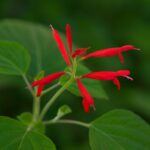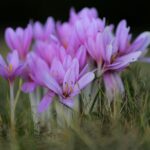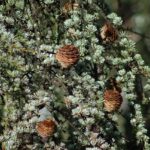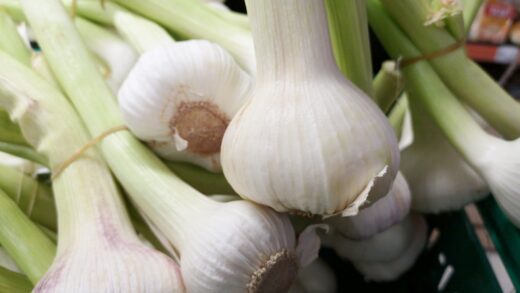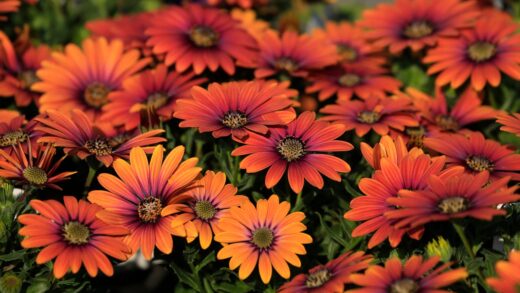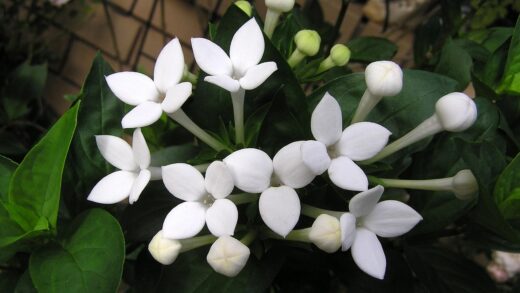Successfully establishing globe amaranth in your garden begins with understanding the optimal methods for planting and propagation. This resilient annual is most commonly grown from seed, a process that is both cost-effective and highly rewarding, allowing for a generous display of its charming, globe-like blossoms. Whether you choose to start seeds indoors to get a jump on the season or sow them directly into the garden, a few key principles will ensure strong germination and vigorous growth. The timing of planting is crucial, as these heat-loving plants should not be exposed to frost. By following proper techniques, you can easily cultivate a large and vibrant population of these durable flowers.
The decision to start seeds indoors or sow them directly outdoors depends largely on your climate and the length of your growing season. Starting seeds indoors, typically six to eight weeks before the last expected frost date, is highly advantageous in regions with shorter summers. This head start allows the plants to reach a more mature stage by the time they are transplanted outdoors, leading to earlier blooms. Use a sterile seed-starting mix in trays or small pots, and sow the seeds about a quarter-inch deep. Maintaining a warm temperature, ideally between 21 and 24 degrees Celsius, is critical for successful germination.
For those in warmer climates with a long growing season, direct sowing into the garden is a perfectly viable and simpler option. Wait until all danger of frost has passed and the soil has warmed up to at least 18 degrees Celsius. Prepare the garden bed by clearing it of weeds and debris, and loosening the soil to a depth of several inches. Sow the seeds thinly and cover them with a light layer of soil, no more than a quarter-inch deep, as some light can aid in their germination. Gently water the area and keep it consistently moist until the seedlings emerge.
Regardless of the method chosen, patience is required as globe amaranth seeds can be somewhat slow and erratic to germinate, sometimes taking anywhere from one to three weeks. To improve the germination rate, you can scarify the seeds gently by rubbing them with a piece of sandpaper or soaking them in warm water for 24 hours before planting. This process helps to break down the hard outer seed coat, allowing water to penetrate more easily and trigger the germination process. Proper spacing is also important; once seedlings are large enough to handle, they should be thinned or transplanted to be about six to twelve inches apart, depending on the variety.
Starting seeds indoors
Starting globe amaranth seeds indoors is an excellent strategy for gardeners who want to ensure early and abundant blooms throughout the summer. The process begins approximately six to eight weeks before the final frost date in your area. This timing provides the seedlings with ample opportunity to develop a strong root system and sturdy foliage before they are introduced to the outdoor environment. You will need seed trays or small pots, a high-quality, sterile seed-starting medium, and a warm, bright location. Filling your containers with the pre-moistened mix sets the stage for successful germination.
More articles on this topic
Sowing the seeds requires a delicate touch. Place one or two seeds in each cell or pot, pressing them gently into the surface of the mix and covering them with a very fine layer of soil, about one-eighth to one-quarter of an inch deep. After sowing, lightly mist the surface with water to ensure good seed-to-soil contact. To create a humid environment conducive to germination, you can cover the trays with a clear plastic dome or plastic wrap. This helps to retain moisture and warmth, but it should be removed as soon as the first seedlings emerge to allow for proper air circulation.
The most critical factor for germination is consistent warmth. Globe amaranth seeds require soil temperatures between 21 and 24 degrees Celsius to sprout effectively. Placing the seed trays on a heat mat is the most reliable way to maintain this optimal temperature range. In addition to warmth, once the seedlings emerge, they will need a strong light source. A sunny, south-facing windowsill can work, but for the sturdiest, most compact seedlings, placing them under fluorescent grow lights for 14 to 16 hours a day is highly recommended to prevent them from becoming weak and leggy.
Once the seedlings have developed their first set of true leaves, you can begin to thin them, leaving only the strongest seedling in each pot. As they continue to grow, water them from the bottom to keep the foliage dry and prevent fungal diseases. About a week or two before you plan to move them into the garden, you must begin the hardening-off process. This involves gradually acclimating the young plants to outdoor conditions by placing them outside for a few hours each day, progressively increasing their exposure to sunlight and wind.
Direct sowing in the garden
Direct sowing is a straightforward method for planting globe amaranth, particularly well-suited for gardeners in regions with long, warm growing seasons. The key to success with this technique is patience and proper timing. You must wait until the threat of frost has completely passed and the soil has had a chance to warm up considerably. Planting too early in cold, damp soil will result in poor germination rates and may cause the seeds to rot. A soil thermometer can be a useful tool to ensure the temperature is consistently above 18 degrees Celsius before you plant.
More articles on this topic
Preparing the garden bed is the first essential step. Choose a location that receives full sun for at least six hours a day. Work the soil to a depth of at least six to eight inches, breaking up any clumps and removing any rocks or weeds. This creates a fine, friable seedbed that will allow the delicate roots of the seedlings to establish themselves easily. If your soil is heavy clay or very poor, this is the ideal time to incorporate organic matter like compost to improve its texture and drainage.
When sowing the seeds, it is important not to plant them too deeply. The seeds of globe amaranth are small and require some light to germinate properly. Scatter the seeds thinly over the prepared soil surface and then cover them with a scant quarter-inch layer of fine soil or vermiculite. After sowing, water the area gently with a fine spray to avoid dislodging the seeds. The soil should be kept consistently moist, but not waterlogged, until you see the first signs of germination, which can take one to three weeks.
After the seedlings have emerged and grown large enough to have a few sets of leaves, they will need to be thinned to their proper spacing. This is a critical step that ensures each plant has enough space, light, and nutrients to grow to its full potential without being overcrowded. Depending on the specific variety, thin the seedlings so they are spaced approximately six to twelve inches apart. While it can be difficult to remove healthy seedlings, this process is vital for the overall health and productivity of your globe amaranth patch.
Propagation from cuttings
While growing from seed is the most common method, globe amaranth can also be successfully propagated from stem cuttings. This technique is particularly useful if you want to create exact clones of a specific plant that has particularly desirable characteristics, such as exceptional color or a very compact habit. Propagation from cuttings is best done in late spring or early summer when the plant is in a state of active vegetative growth. The parent plant should be healthy, vigorous, and free from any signs of disease or pest infestation.
To take a cutting, select a healthy, non-flowering stem. It is important to choose a stem that is still relatively soft and green, not old and woody. Using a sharp, sterile knife or pruning shears, cut a three- to four-inch section from the tip of the stem. Make the cut just below a leaf node, which is the point on the stem where a leaf emerges. Carefully remove the leaves from the lower half of the cutting, leaving only two or three leaves at the very top to reduce moisture loss through transpiration.
For the best chance of success, you can dip the cut end of the stem into a rooting hormone powder. While not strictly necessary, rooting hormone can significantly speed up the development of roots and increase the success rate of your cuttings. After applying the hormone, insert the bottom inch of the cutting into a pot filled with a moist, sterile propagating medium, such as a mix of perlite and peat moss or coarse sand. The medium should be well-draining to prevent the cutting from rotting before it has a chance to root.
Place the potted cuttings in a warm location with bright, indirect light. To maintain high humidity around the cuttings, which is crucial for root development, you can cover the pot with a clear plastic bag or place it inside a propagator. Be sure to provide some ventilation to prevent fungal growth. Keep the medium consistently moist but not waterlogged. Roots should begin to form within two to four weeks. You can check for root growth by gently tugging on the cutting; if you feel resistance, roots have formed, and the new plant will soon be ready for transplanting.
Transplanting seedlings
The process of transplanting globe amaranth seedlings into their final garden location is a critical transition that must be handled with care to avoid transplant shock. Whether you have started your seeds indoors or are moving seedlings you purchased from a nursery, they must first be properly hardened off. This gradual acclimation to outdoor conditions over a period of seven to ten days is essential. Start by placing the seedlings in a sheltered, shady spot for a few hours on the first day, and progressively increase their exposure to direct sunlight and outdoor temperatures each subsequent day.
Choose a suitable day for transplanting, preferably one that is overcast or in the late afternoon, to minimize stress on the young plants. The garden bed should be prepared in advance, with the soil loosened and amended if necessary. Dig holes for the seedlings that are slightly larger than their root balls. The spacing is important for future growth and air circulation; space smaller, dwarf varieties about six inches apart, while larger varieties may require up to twelve inches between plants to allow them to reach their full, bushy potential.
Carefully remove each seedling from its container, making every effort to keep the root ball intact. If the seedlings are in a tray with individual cells, you can gently push them out from the bottom. If they are in a pot, turn it upside down and tap the bottom to release the plant. Place the seedling into the prepared hole at the same depth it was growing in its original container. Planting it too deep can lead to stem rot, while planting it too high can expose the roots.
After placing the seedling in the hole, gently backfill with soil, firming it lightly around the base of the plant to eliminate any large air pockets. Once all the seedlings are in the ground, water them thoroughly at the base. This initial, deep watering helps to settle the soil around the roots and provides the moisture needed for the plant to begin establishing itself in its new home. Continue to keep the soil consistently moist for the first week or two after transplanting to help the plants recover from the move and encourage new root growth.










